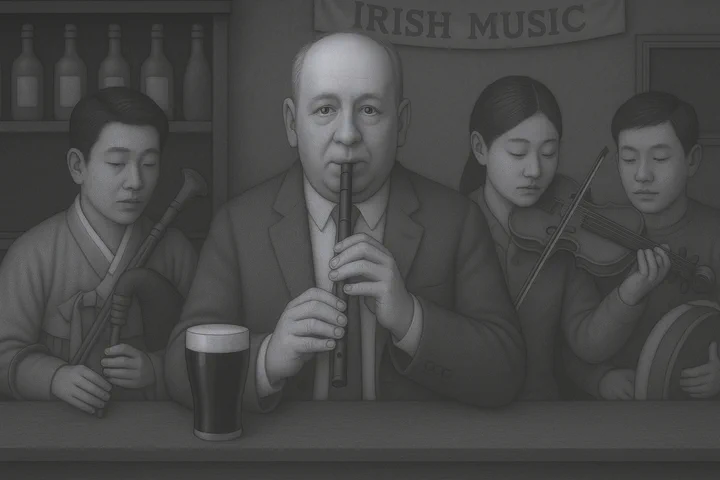Presidential candidates and Sejong City

Significance. The proposed relocation of South Korea’s National Assembly and presidential office from Seoul to Sejong has re-emerged as a campaign issue ahead of the presidential election. Advocates frame the move as a step toward resolving administrative inefficiency and easing regional imbalance.
The proposal carries high political, institutional, and logistical costs. These obstacles are particularly relevant to foreign governments and diplomats, as any such shift would affect the organization of Korea’s diplomatic corps and alter the geography of official state engagements. While long-term interest in capital relocation persists across party lines, the lack of consensus and legal hurdles—including potential constitutional challenges—make progress highly unlikely in the short term.
As presidential candidates continue to use the issue rhetorically, the topic will remain politically salient without translating into concrete action. Understanding its implications requires attention to institutional inertia and diplomatic infrastructure tied to Seoul’s existing role as the administrative, political, and diplomatic hub.
Analysis. The idea of relocating South Korea’s capital functions to Sejong traces back to the Roh Moo-hyun administration, which envisioned the city as a central administrative hub. Sejong City now houses most ministries and government agencies, but the legislature and executive office remain in Seoul.
Calls for a full relocation have periodically resurfaced—most recently in the 2025 general election cycle—with proponents arguing that it will reduce inefficiencies caused by geographic separation and promote balanced regional development. Despite this, no administration has secured the political momentum to implement the move, and the Constitutional Court has previously ruled that the capital cannot be relocated without constitutional revision.
Given the legal and political constraints, relocation of the National Assembly and presidential office is unlikely to progress in the short term. Constitutional revision requires a two-thirds vote in the National Assembly and majority approval in a national referendum—an unattainable threshold in South Korea’s highly polarized political environment.
Even if a future administration were to prioritize relocation, implementation would take years and require bipartisan legislative support and massive capital investment.
Current calls by presidential candidates appear more symbolic than strategic, aiming to capture attention in Chungcheong constituencies rather than initiate a genuine legislative process.
The lack of executive-level commitment—particularly from presidents once incumbent—further signals that relocation will remain aspirational rather than actionable for the foreseeable future.
Mainstream media reporting has focused on the political utility of relocation proposals during campaign periods, highlighting how candidates periodically revive the issue to appeal to voters in central and southern regions.
Coverage largely neglects the structural and institutional barriers that prevent these proposals from advancing. There is little scrutiny of the constitutional roadblocks or the political capital required to overcome them. Moreover, few reports examine the logistical cost of duplicating or moving diplomatic facilities, foreign missions, and security infrastructure. This analytical gap reinforces the perception of relocation as a legitimate campaign issue rather than an unfeasible policy objective.
Relocating Korea’s political institutions to Sejong would present significant logistical challenges for the diplomatic corps.
Most embassies, consulates, and international organizations are concentrated in Seoul, close to the Ministry of Foreign Affairs, National Assembly, and presidential office. A shift would complicate diplomatic access, disrupt established communication networks, and likely require foreign governments to consider dual-representation or relocation of personnel.
In preparing the Sejong Administrative Capital, planners looked to Canberra, Australia, for insight into how an administrative capital outside of a major metropolitan center functions. The greatest challenge for the diplomatic community in the case of Canberra was the need to duplicate diplomatic mission functions between the capital and a major metropolitan center by maintaining a smaller, more politically focused embassy, and a larger consulate in a metropolitan center housing trade, consular functions, and public diplomacy. Understandably, this has significant implications for security, personnel, finances, and efficiency.
In practice, the diplomatic community’s heavy investment in Seoul’s infrastructure acts as a strong disincentive to any relocation. Continued ambiguity over the capital’s future adds uncertainty to embassy planning and will affect long-term decisions regarding staffing and facilities.
Impact. Over the immediate term and short term, the proposal to relocate the National Assembly and presidential office to Sejong will remain politically symbolic with no legislative or executive movement; however, over the medium term, diplomats should monitor whether sustained campaign rhetoric begins to shift public or bipartisan opinion toward institutional relocation as part of broader administrative reform discourse.
